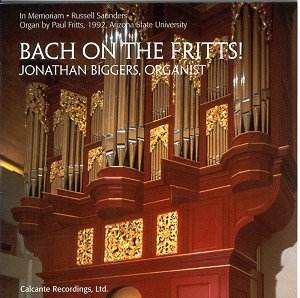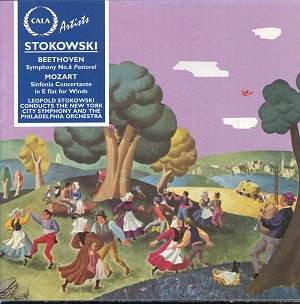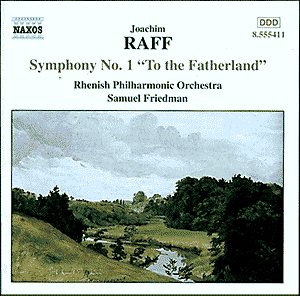 Composer: Johann Sebastian Bach
Composer: Johann Sebastian Bach
Works: Toccata, Adagio and Fugue in C-Major BWV 564, Partita on ‘Sei gegrüsset, Jesu gütig’ BWV 768, Prelude and Fugue in A-Minor BWV 543, Prelude and Fugue in A-Major BWV 536, Chorale Prelude ‘Schmücke dich, o liebe Seele’ BWV 654, Chorale Prelude ‘Wenn wir in höchsten Nöten’ BWV 668a, Passacaglia in C-Minor BWV 582
Performers: Jonathan Biggers, Organist
Recording: May 1994, Arizona State University, Temple, Arizona
Label: Calcante Recordings CAL CD009 [77.01]
Bach’s organ works, revered for their intricate counterpoint and emotional depth, encapsulate the composer’s mastery of form and his profound spiritual connection with music. This recording by Jonathan Biggers offers a selection of some of the most significant pieces from the organ repertoire, showcasing the composer’s innovative approaches to melody, texture, and structural complexity. The repertoire spans a variety of genres, from the operatic flourish of the Toccata, Adagio and Fugue in C-Major BWV 564 to the meditative introspection of the Passacaglia in C-Minor BWV 582, each work reflecting Bach’s capacity to transcend mere technicality and reach for the sublime.
Biggers’s interpretation presents a compelling spectrum of Bach’s organ writing. The Toccata, Adagio and Fugue opens with an exuberance that should ideally set the stage for the grand architecture of the work. However, the performance suffers from an unclear articulation in the pedal line, which becomes muddled due to the registration choices. The intended contrasts between the sections appear blurred, diminishing the dramatic tension that characterizes Bach’s writing. The Italian influence, noted by scholars like Peter Williams, is less pronounced here than it could be, with the piece lacking the vibrant energy expected from such a dynamic form.
The Partita on ‘Sei gegrüsset, Jesu gütig’ is an ambitious undertaking, comprising eleven variations that demand a nuanced understanding of both the chorale melody and the variations’ structural integrity. Biggers’s choices in registration do not sufficiently differentiate the manual lines, leading to a homogenous sound that detracts from the vitality of the variations. The excessive rubato in certain sections introduces an inappropriate Romantic sentiment that undermines the piece’s inherent rhythmic drive. Each variation should be a distinct musical conversation, yet the lack of clarity in voicing results in a feeling of monotony that climbs to a peak of unease in the pacing of the performance.
The Preludes and Fugues in A-Minor and A-Major demonstrate some of Bach’s most virtuosic writing. The Prelude in A-Minor, though played with speed, lacks the dynamic contrasts that could invigorate the performance. Instead, it feels static, failing to capture the dance-like quality that should imbue the fugue with life. The Prelude in A-Major initially offers a gentle touch but faces similar challenges; the fugue’s contrapuntal richness becomes obscured, leading to a loss of the drama that Bach so expertly weaves into his compositions.
The Chorale Preludes, particularly ‘Schmücke dich, o liebe Seele’ and ‘Wenn wir in höchsten Nöten,’ reveal glimpses of Biggers’s interpretative strength, though they, too, do not escape the overall tendency toward blur in execution. The embellishments, which should act as vocal expressions, often fail to resonate as intended, lacking the crisp articulation that would allow the chorale melodies to soar. The Passacaglia in C-Minor stands as Bach’s only example in this key, a monumental work that invites both technical prowess and interpretative insight. Unfortunately, the tempo fluctuations and again vague articulation diminish the impact, rendering a piece that is meant to be monumental and reflective into one that feels rushed and disjointed.
The organ used in this recording, built by Paul Fritts and based on historical practices, is designed to provide a rich palette of tones suited to the music of Bach. However, Biggers’s registration choices do not capitalize on the organ’s potential, frequently resulting in a sound that lacks the clarity and definition required for these complex works. The acoustic environment of the Arizona State University Temple, with its significant reverberation, should ideally enhance the music, yet the performance does not fully engage with these spatial qualities, leading to a sound that often feels constricted rather than expansive.
This recording, while ambitious in its scope, ultimately falls short of capturing the essence of Bach’s extraordinary organ music. The interpretive decisions, particularly regarding registration and tempo, lead to a blurred and often static musical experience that does not do justice to the vibrancy of the compositions. In the context of the vast discography devoted to Bach’s organ works, this effort may not stand out, overshadowed by performances that more adeptly navigate the intricate textures and emotional landscapes that Bach so masterfully constructed.



